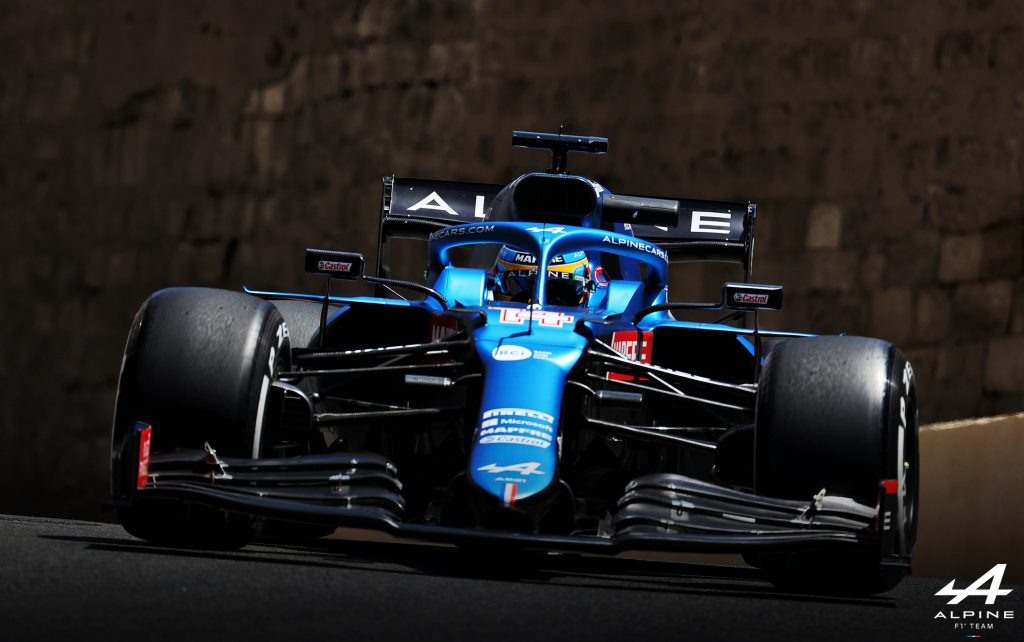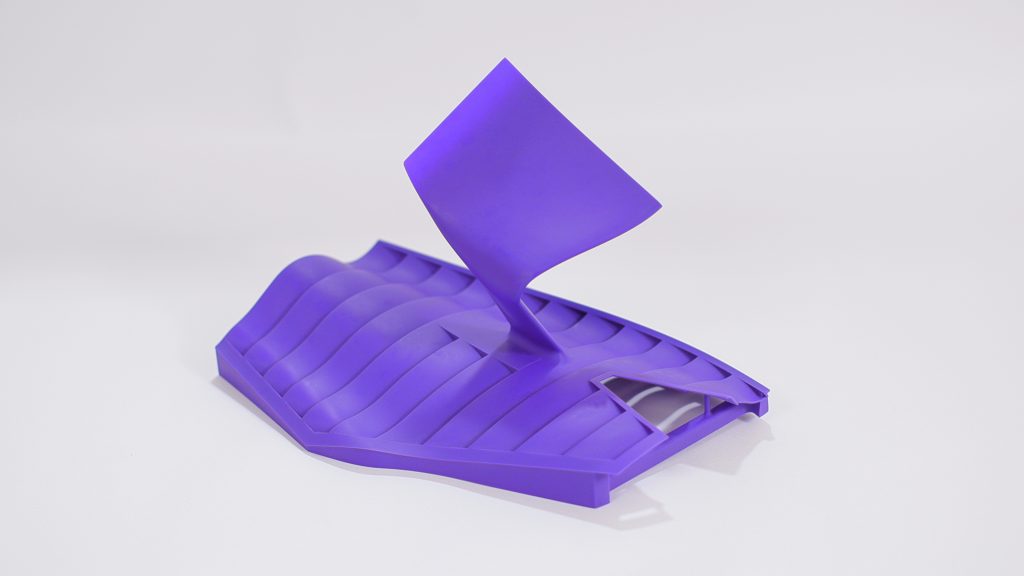For a deeper-dive into additive manufacturing, you can now subscribe to our Youtube channel, featuring discussion, de-briefs and shots of 3D printing in-action.
U.S. 3D printer OEM 3D Systems has added a composite resin to its material portfolio that’s specifically designed to address Particle Image Velocimetry (PIV) applications.
Developed alongside the Alpine F1 Team, the new Accura Composite PIV reportedly yields robust wind tunnel testing models that are color-optimized to enable high-res aero data collection. Using 3D Systems’ resin and SLA 3D printing, Alpine says that it has already been able to maximize its wind tunnel investment and better understand the airflow over its car, effectively boosting its on-track performance.
“Customer-centric innovation is a guiding force within 3D Systems,” said Kevin Baughey, Leader of 3D Systems’ Transportation & Motorsports segment. “Working with the Alpine F1 Team to develop our newest material is another example of how we’re leveraging our F1 application expertise to develop advanced solutions that give our customers a competitive edge.”
“We’ve been impressed by the results the team has experienced in the wind tunnel, and look forward to seeing their success on the circuit this season.”

Aiding Alpine’s F1 supremacy bid
In Formula 1, aerodynamic testing is now so essential to the downforce levels and speeds that cars are able to achieve, that teams pretty much conduct wind tunnel evaluations on a 24/7 basis. In the past, teams have deployed 3D Systems’ technologies to rapidly 3D print models with innovative designs such as integrated pressure tappings, and subjected them to laser-based PIV test runs.
However, collecting reliable PIV data can be difficult, as such lasers are often reflected off other background surfaces, reducing the level of image quality it’s possible to achieve. To help clients get around this, 3D Systems has worked with Alpine F1 to develop the Accura Composite PIV, which is specifically formulated to reduce any laser mirroring.
Alongside 3D Systems’ machines, software and services, the material has now enabled Alpine F1 to streamline an otherwise lengthy pre-printing process, gain a greater insight into its car’s aerodynamic behaviours and ultimately improve its pace on-track, with Fernando Alonso finishing sixth to achieve the team’s best result of the season at last weekend’s Azerbaijan Grand Prix.

3D Systems’ rugged testing material
Described by Alpine F1 as having “unique optical characteristics,” the Accura Composite PIV features a distinctive purple color that’s designed to make it easier to draw conclusions from PIV testing data. In addition to its vibrant appearance, the new material also has a high tensile and flex modulus, as well as a heat deflection temperature of 100° C, ensuring that it’s sufficiently durable to pass extensive trials.
Optimized for use with 3D Systems’ SLA and 3D Sprint software technologies, the Accura Composite PIV enables the production of large-format high-resolution parts measuring up to 1500mm in length, and working with the firm’s Application Innovation Group, Alpine F1 now produces nearly 500 of these wind tunnel testing components each week.
“We’ve proudly collaborated with 3D Systems for many years,” concluded Pat Warner, Advanced Digital Manufacturing Manager of the Alpine F1 team. “The deep expertise of their application engineers and their industry-leading solutions have been an invaluable part of our innovation team.”
“It’s been exciting to co-develop Accura Composite PIV and see the benefits it’s bringing to our process… we are now collecting more reliable data from our PIV system in the wind tunnel.”
3D printing’s F1 applications
In the midst of every F1 season, each and every team is effectively pitted against one another in a battle to develop performance-enhancing upgrades for their cars. As a result, many constructors are beginning to turn to 3D printing, with the aim of gaining an R&D advantage due to the technology’s rapid prototyping capabilities.
Similarly to Alpine, Williams Racing announced that it had partnered with Nexa3D ahead of the 2021 season, to additive manufacture functional wind tunnel components. Leveraging Nexa3D’s high-speed NXE400 3D printer, Williams is now able to produce structurally optimized, lightweight parts that illustrate the aerodynamic properties of its cars.
McLaren Racing, on the other hand, has been using additive manufacturing trackside since 2017. Since signing a four-year deal with 3D printer manufacturer Stratasys, McLaren has managed to fabricate multiple different prototypes and on-demand spare parts, including brake cooling ducts and rear wing flaps.
Earlier this year, the Alfa Romeo Racing ORLEN team also announced that it had doubled the amount of 3D printed parts included on this year’s car. By adopting additive manufacturing, the team estimates that it can reduce its related costs by up to 90%, helping it to adhere to F1’s newly-introduced $145 million cost cap.
To stay up to date with the latest 3D printing news, don’t forget to subscribe to the 3D Printing Industry newsletter or follow us on Twitter or liking our page on Facebook.
Are you looking for a job in the additive manufacturing industry? Visit 3D Printing Jobs for a selection of roles in the industry.
Featured image shows Fernando Alonso’s Alpine F1 car at the 2021 Azerbaijan Grand Prix. Image via the Alpine F1 Team.



